The conservation of fans is challenging, having to take into account the variety and fragility of the materials used, and also the shape, volume and interconnection of the different parts. Moreover, fans are often masterpieces on a very small scale, displaying exquisite painting on leaves, fine engraving on sticks or precious jewelry to adorn rivet or sticks.
Most of the time, they have suffered from poor storage or handling and when they reach my studio they are full of splits and losses, and more often than not, they have suffered from very clumsy former repairs.
Fan conservation has been my passion and my specialty for about ten years now, and I‘d like to share with you one of the most challenging and surprising conservation projects I have ever undertaken.
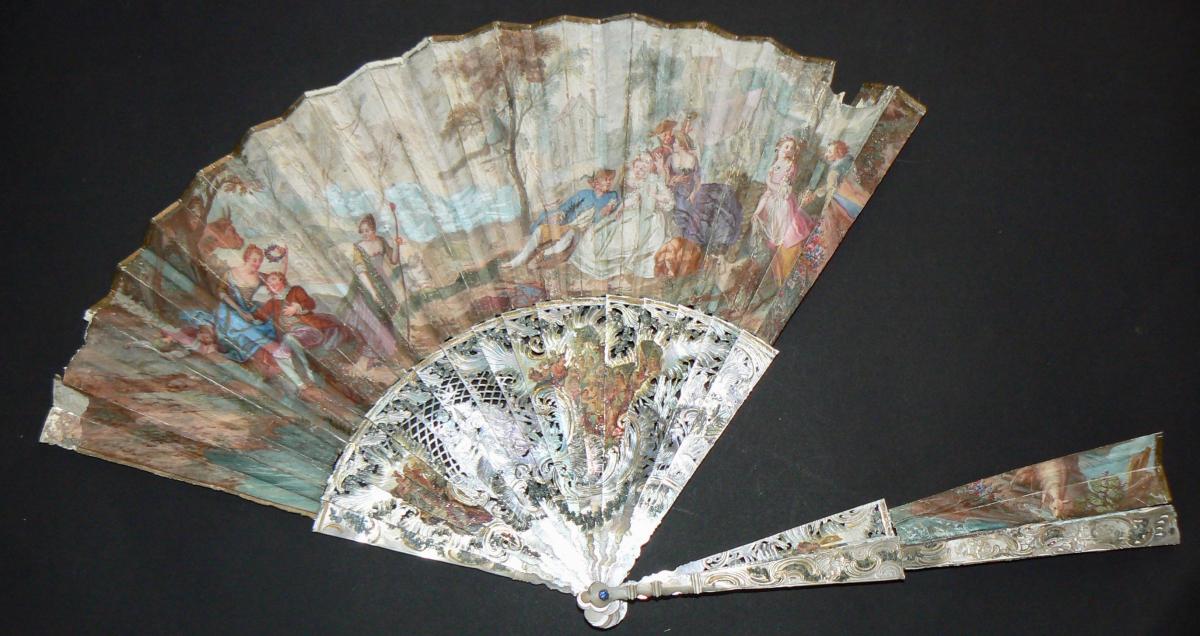


It concerns an 18th century fan, with mother of pearl sticks and both leaves made of ‘cabretille’ (a very thin velum made of goatskin, also called ‘swan skin’ by Italian fan makers). The amazing artistic treatment of the leaves and sticks make it impossible to differentiate the front from the back, it’s a genuine “double-sided fan“.
Apart from its incredible artistic quality (in both painting and mother of pearl engraving), this fan is particularly precious because of the signatures on both the front and back leaves. Being signed is very uncommon for a fan of this period, but being signed on both leaves is quite unique.

When it was entrusted to me, it had suffered from several layers of restorations, apparently added at different times: there were some pieces of paper fixed with rabbit skin glue, some velum pieces with wheat glue, all of them having been applied ‘on’ and ‘between’ the fan leaves. To make them less conspicuous, they had been covered with numerous layers of repaints, luckily with gouache.

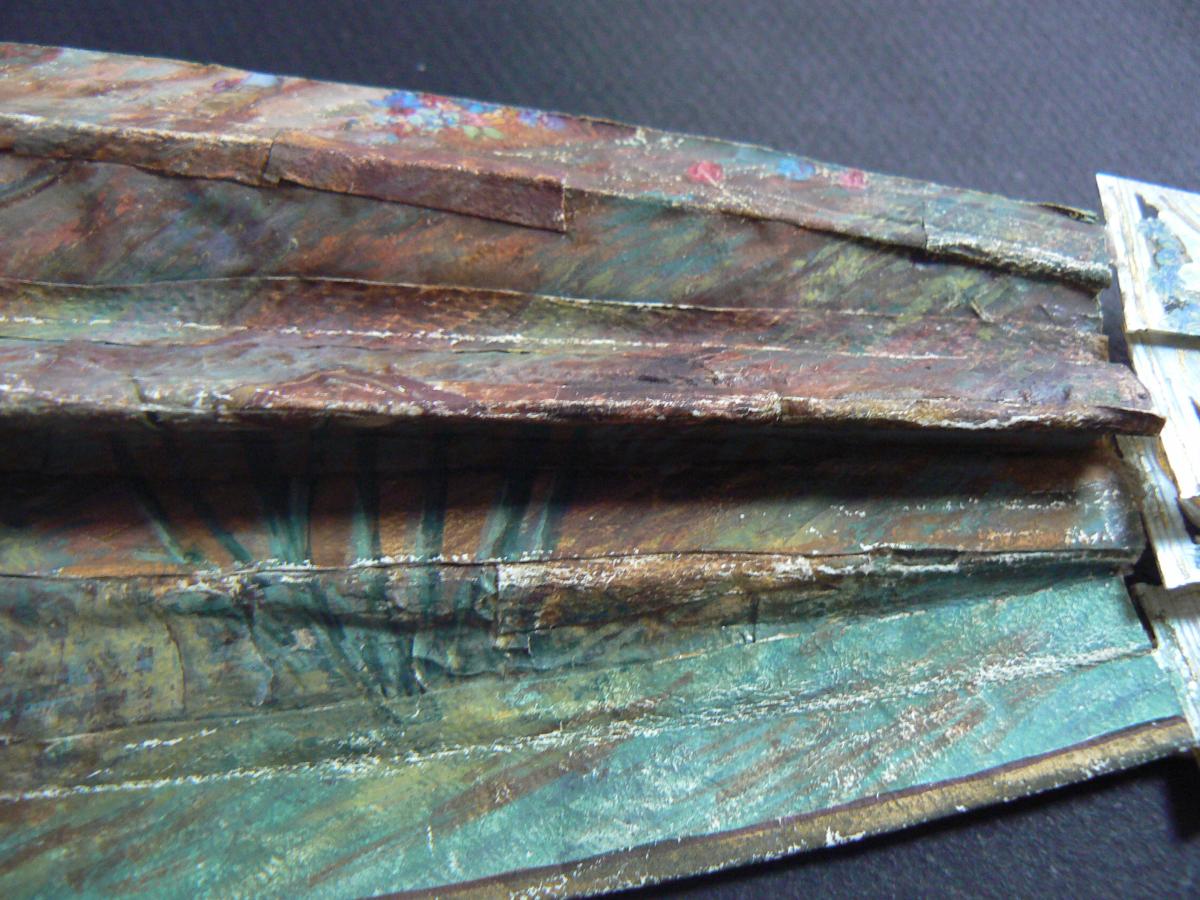
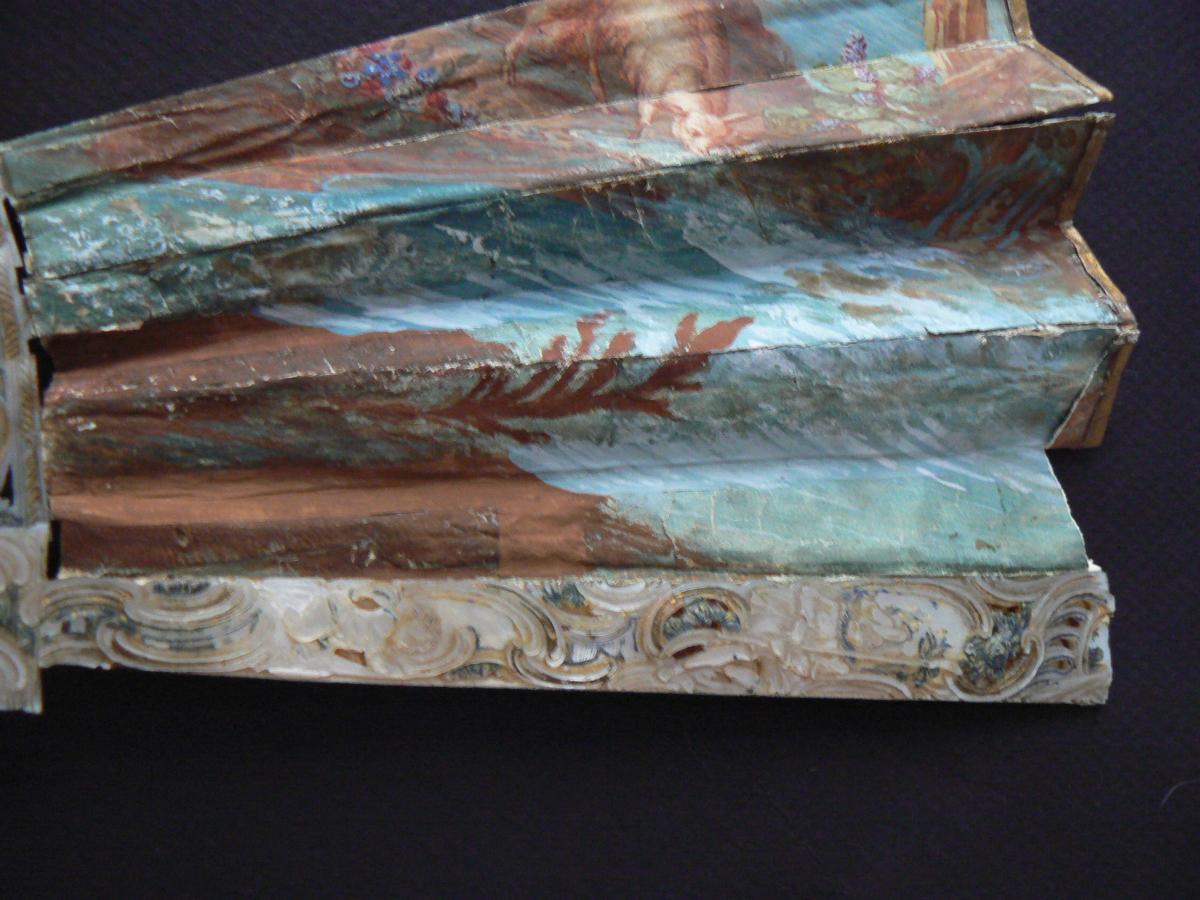
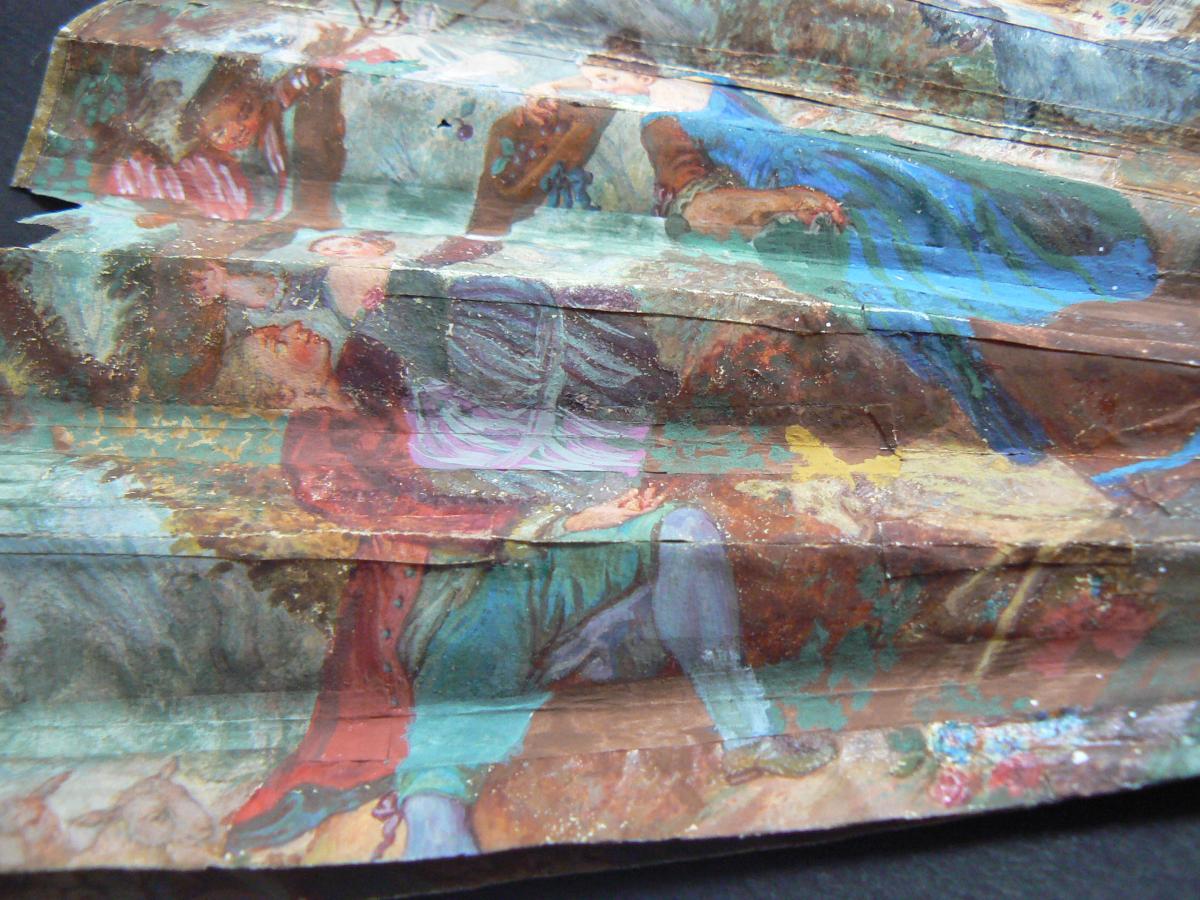
In spite of these reinforcements, there was much damage left, like splits and losses. The most worrisome result of these ill-fated actions was that this work of art couldn’t be folded. The rigidity and the extreme thickness of the leaves (mainly on the far ends) had turned it into a ‘static sculpture’.
Fortunately, the fan owner was fully aware of both the historical and artistic value of the fan and wished a full illusionistic conservation, allowing me to take all the necessary steps to achieve that goal.
After a soft cleaning using a Noribake brush and a punctual erasing when needed (with a Staedler pencil eraser©), the most urgent and delicate step was to remove all the possible pieces added without damaging the leaves. I mainly used a highly concentrated aqua Tylose (Methylcellulose©) gel, which enabled me a precise application on the specific areas of former reinforcements patches and a control of the humidity applied to the material. Actually, as the fan leaves were made of ‘cabretille ‘ (a very hygroscopic material), I had to be very careful with the use of water. That being so, and as the preliminary tests confirmed, the ‘cabretille’ had slowly lost its sensibility to it, due both to the passing of time and to the use of former invasive unsuitable treatments.
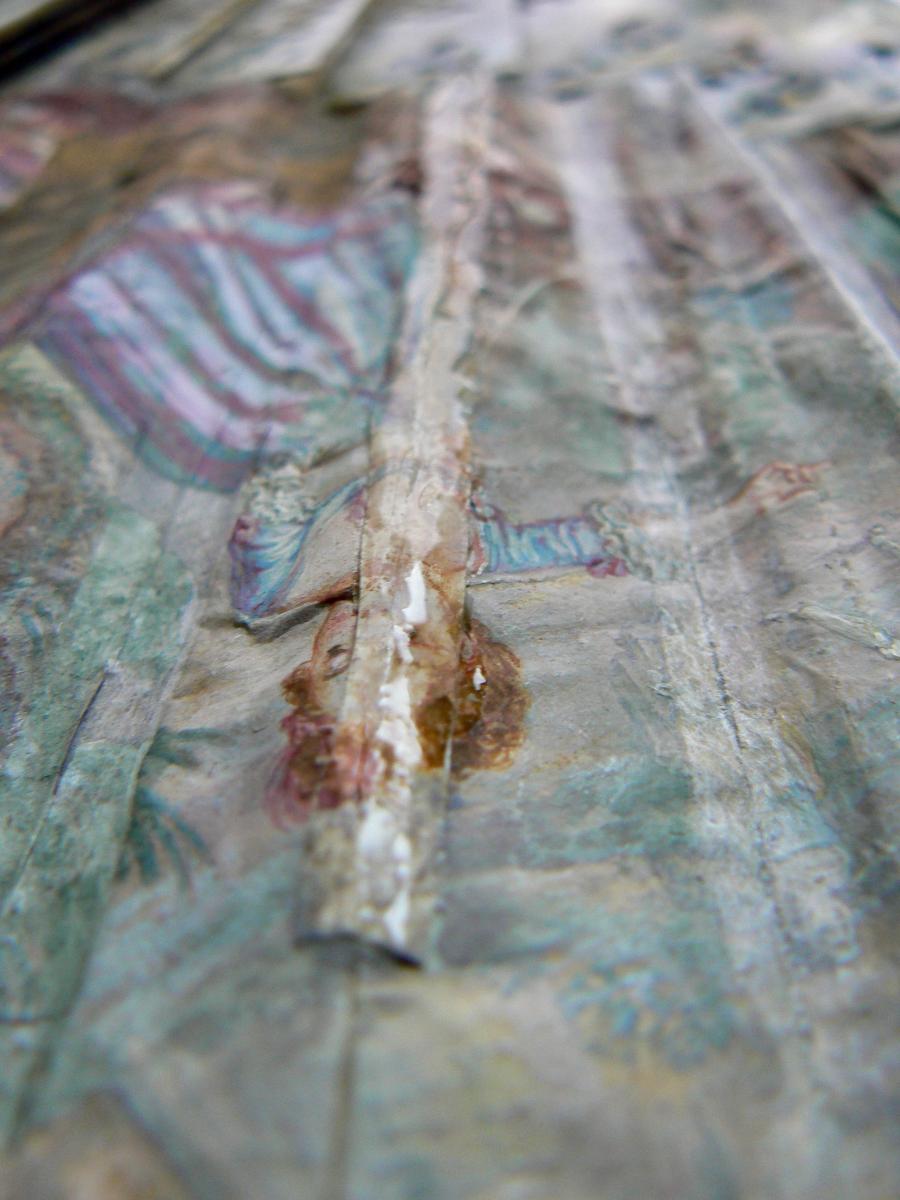
Layer after layer, using Tylose© gel, enzymatic packs and compresses but always enhancing dry mechanical techniques like scrubbing with a blunt scalpel, I finally reached the original material where I found the first big surprise: the discovery of the original and almost ‘undamaged’ painting, especially the faces of the figures.
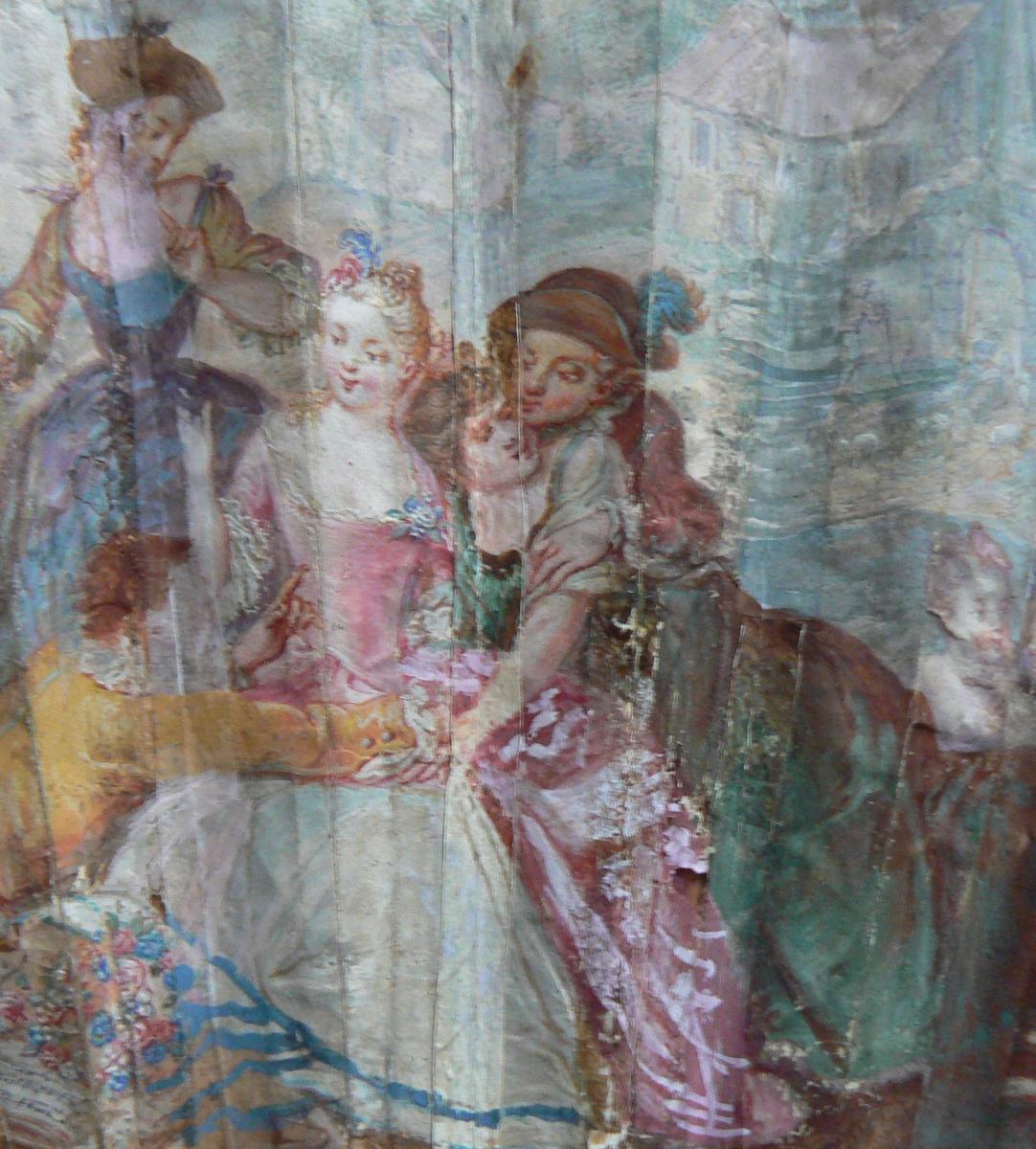



After removing all reinforcements patches and former repaints (also cautiously cleaned with wet cotton buds), I finally noticed that the difference between the repaint and the original model was breathtaking, and the results were very satisfying.
During the process, I was also delighted to reveal several figures and scenes, which were totally unexpected. Undoubtedly, previous ‘restorers’ had preferred to paint some kind of landscape instead of the three original figures on which they had glued paper and goat skin.
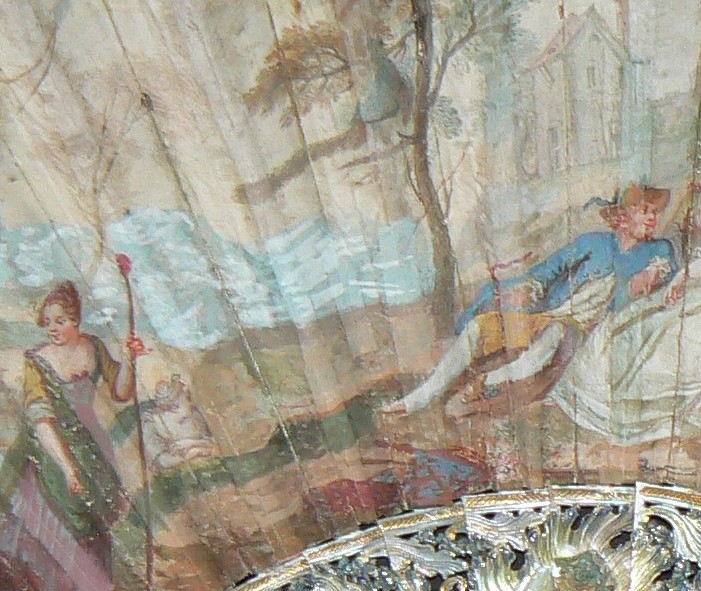
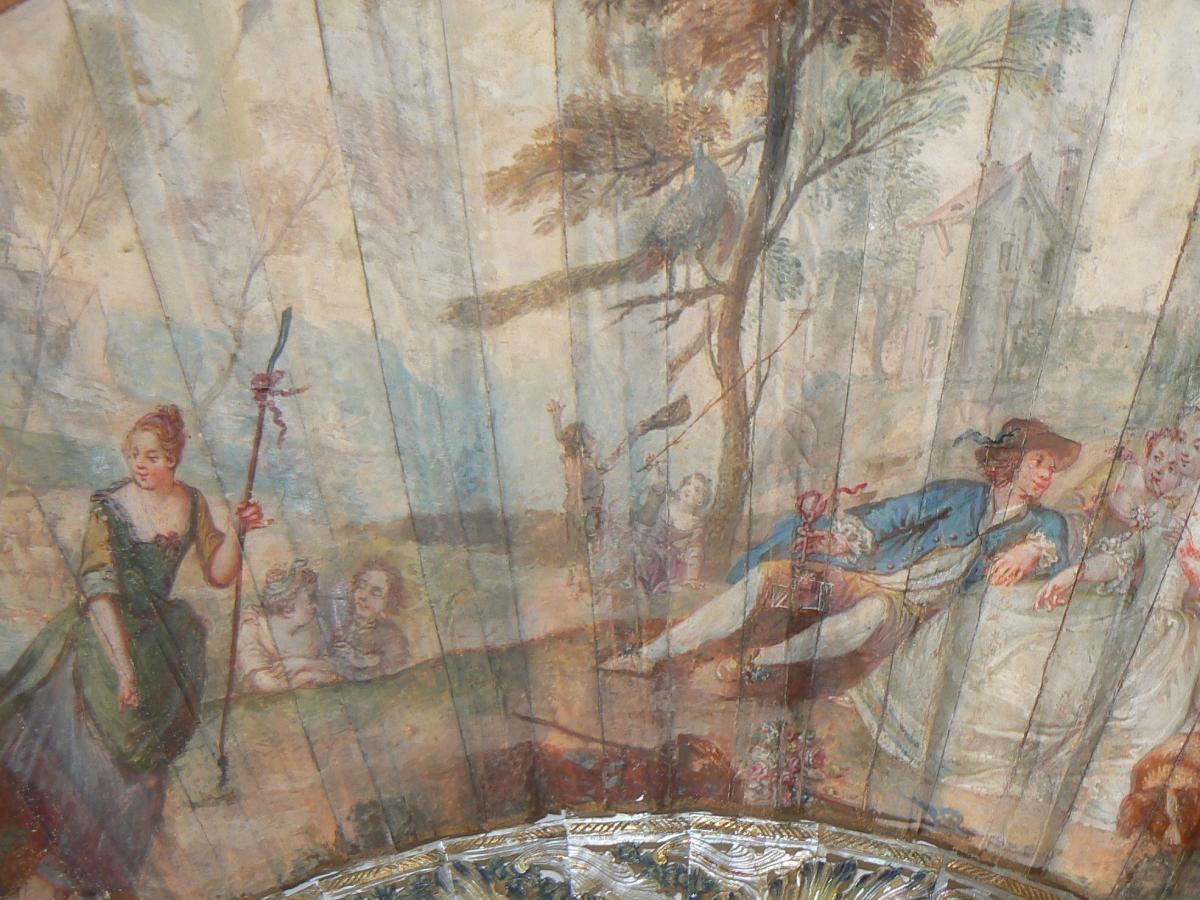
The second main step was to reinforce all the splits in the leaves. I usually glue them ‘between the leaves’, on the back of each leaf, to make the interventions as inconspicuous as possible. It was impossible on this fan, as the two leaves were fixed together because of former and inaccessible repairs.
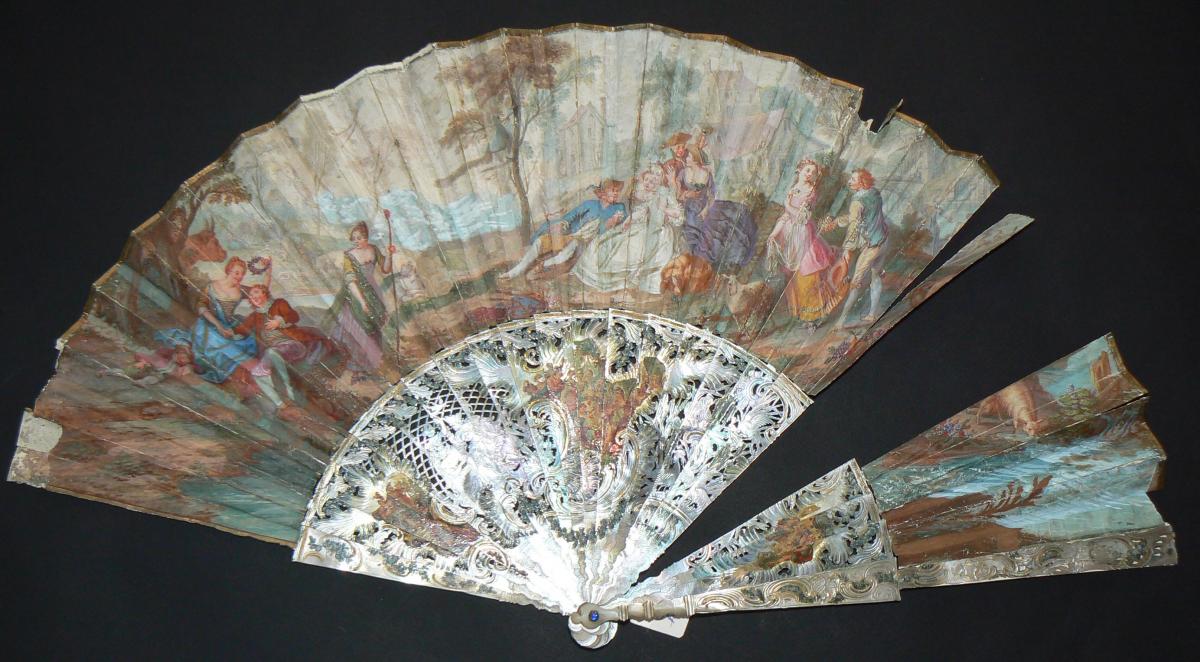
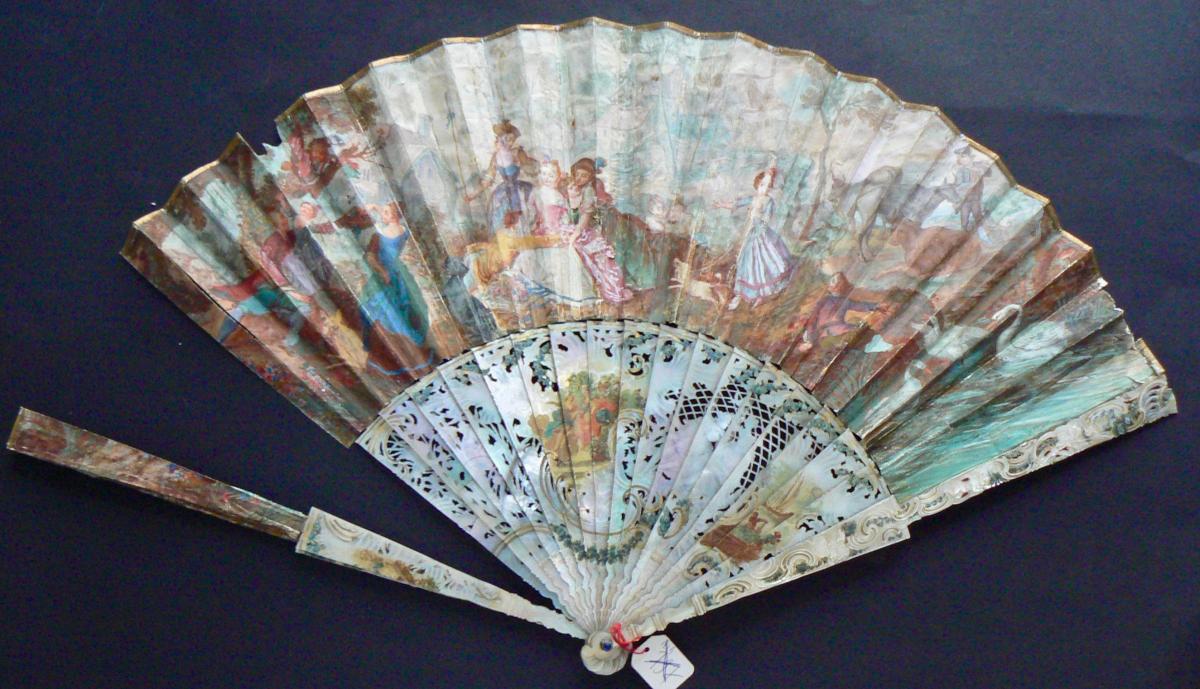
As the leaves were mostly glued together and had splits along the same lines, I asked the owner to choose which side of the fan would bear all the needed repairs. The other side would be left as untouched as possible, since most of the reinforcement bands would be on the same side of the fan.
I made a support with neutral cardboard which is essential to apply the strips and very helpful during their drying under pressure. Indeed, it helped avoid adding any tension to the leaves during the process. The bands were made of defibred 9g/m2 Japanese Kozo paper, and glued with Klucel G (Hydroxylpropylcellulose©) mixed in Ethanol at 10%, preserving the elasticity of the folds, enabling the fan to be properly opened and closed.
Some more surprises were in store for me, and not good ones, as might have been expected.
The worst one was a big gap, overlapping three folds, hidden under former restorations. Located at the far end of the leaf, where bad restorations had piled up, numerous layers of painted paper were glued on top of each other, turning this zone into a very thick and strong card.

Filling a gap in 18th century ‘cabretille’, moreover in a particularly tight and essential area of a fan, raises several issues. First of all, everybody knowns that it’s impossible to find such material nowadays: the delicacy of this ‘swan skin’ is very hard and expensive to reproduce, and the savoir-faire has long been lost. Thereby I would have had to use 18th century ‘cabretille’ scraps to respect the original material, ignoring the principle of stability and neutrality of the conservation (pas de majuscule) material all restorers have to respect in their interventions. However these pieces of thin vellum would not have been strong enough to be used for this purpose, and would have required to be lined with paper.
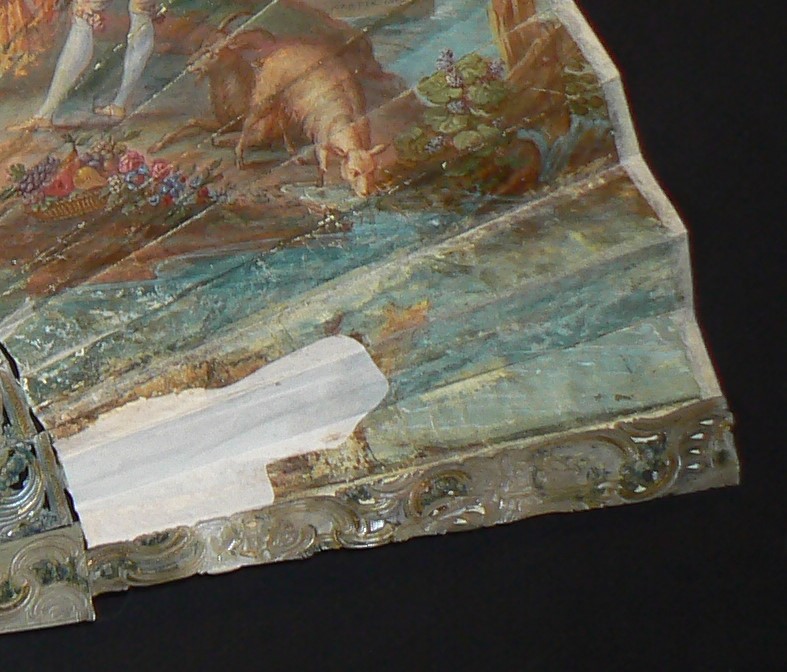
With the agreement of the owner, I chose to use stable, permanent and resistant paper to fill those gaps (white Ruscombe Paper of 45g/m2), easily painted over after application. I used wheat starch paste to stick this patch to the leaves, and I mixed it with Evacon-R© to fix the paper to the fan stick.

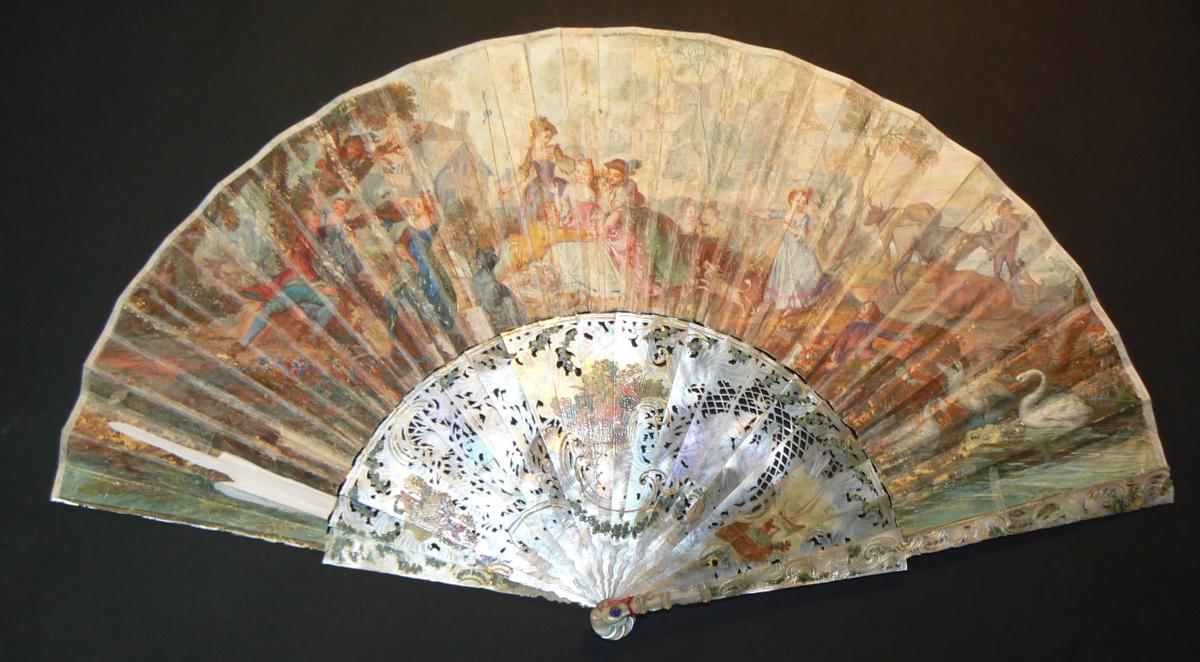
The repaints were made with watercolour, gouache and coloured pencils, using the other end of the leaf as a model, as the owner asked. The goal was to make this area as inconspicuous as possible, without adding any specific figure to it, respecting the integrity of the fan.

I devoted about a week to this conservation work, putting into practice all the skills I have learnt during my 10 years’ experience in fan restoration. It was one of the most challenging project I had ever undertaken, but when I finally completed it, what a relief and delight !


About the author: Yolaine Voltz is a graphic arts restorer working at the L’Utile Zéphyr Studio in Paris. She specialises in the restoration of fans and globes. She heard of our newsletter and thought we may be interested in her work.